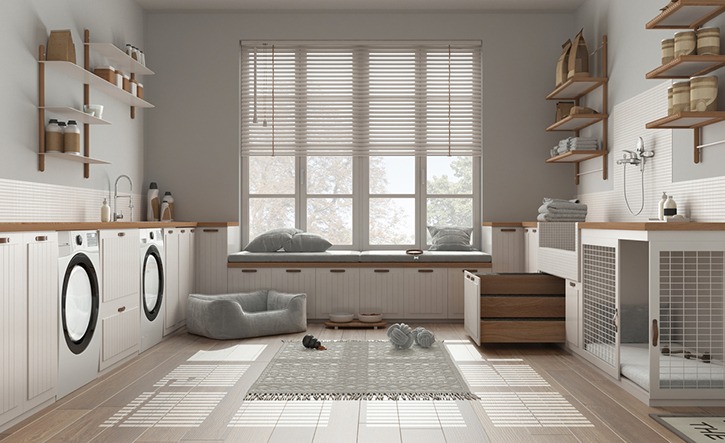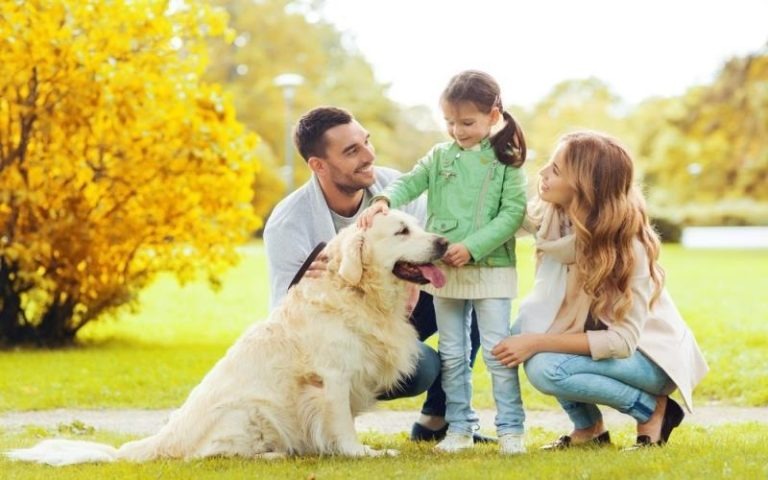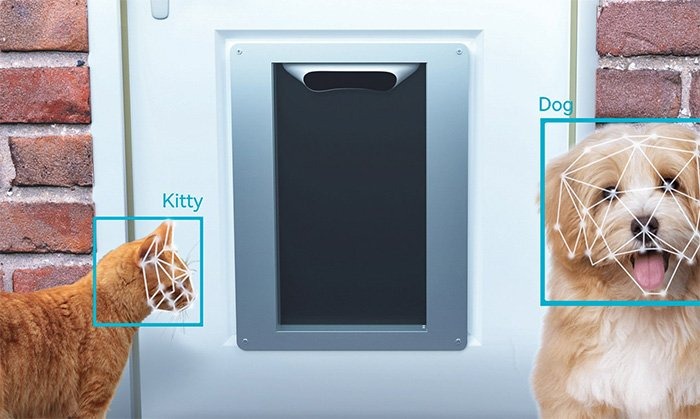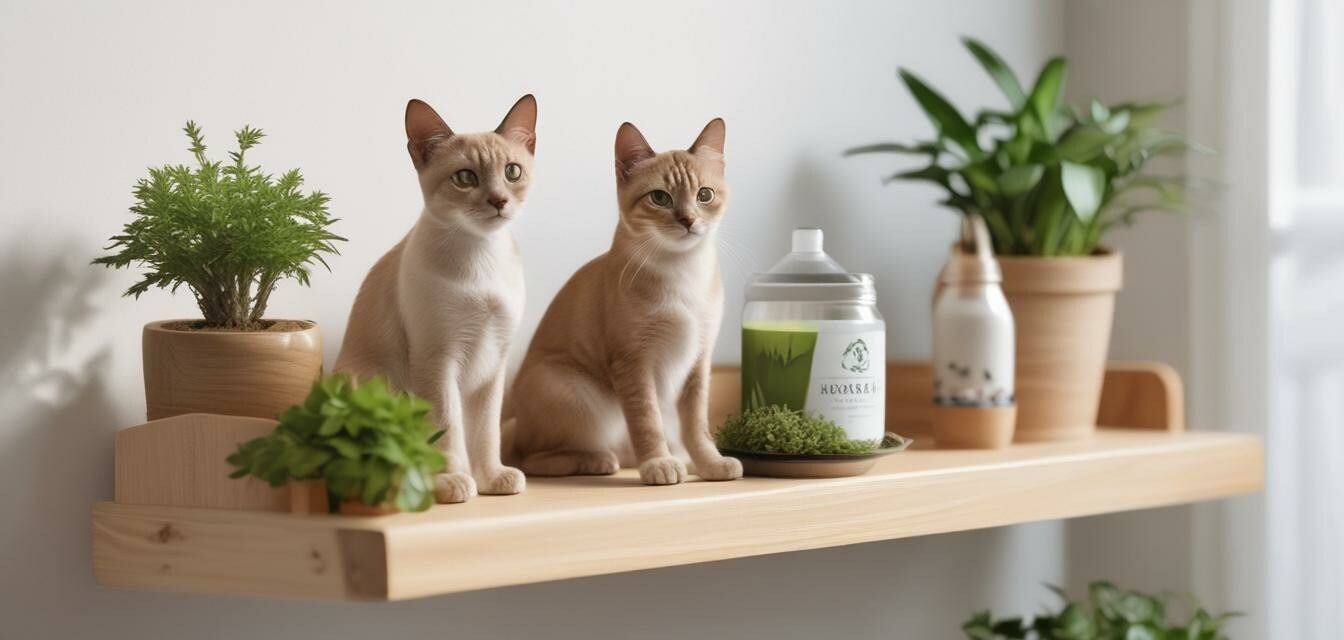
Designing pet-safe home renovations (flooring, furniture, windows).
Renovating a home for pets requires thoughtful choices in flooring, furniture, and windows to ensure safety, comfort, and hygiene without compromising style. From selecting durable, scratch-resistant floors to designing pet-friendly furniture and secure, ventilated windows, every detail matters. A well-planned, pet-safe renovation creates a harmonious environment where both pets and humans can live comfortably and safely together.
🐶 Pet Star
56 min read · 8, Oct 2025

Introduction: Creating a Safe and Stylish Haven for Pets (Approx. 500 words)
Modern homeowners increasingly consider their pets as family members—and rightly so. As pets spend a significant amount of time indoors, the design and materials used in homes directly affect their comfort, health, and safety. Designing a pet-safe home goes far beyond adding a cozy bed or food station. It involves thoughtful planning in renovation aspects such as flooring, furniture, and windows, which can either protect or endanger your pet’s well-being.
Pets, especially cats and dogs, are curious creatures. They explore, chew, scratch, and nap in unexpected places. Hence, a home that looks perfect to humans may conceal multiple hazards for them. Slippery floors can cause joint injuries, sharp-edged furniture can hurt paws, and loosely fitted windows or blinds may lead to accidents. The goal of pet-safe renovation is to minimize these risks while maintaining the home’s aesthetic appeal and functionality.
When planning home improvements, selecting the right flooring materials is crucial. The ideal flooring should be durable, scratch-resistant, easy to clean, and comfortable for paws. Similarly, pet-friendly furniture choices should consider stain-resistant fabrics, smooth corners, and easy-to-maintain surfaces. Even window placement and design matter—providing proper ventilation and natural light while ensuring safety from falls or escapes.
Designing for pets also means taking a holistic view: considering their sensory world, behavioral instincts, and physical needs. For example, cats appreciate vertical spaces, while dogs prefer cozy corners where they can rest undisturbed. Homeowners can incorporate pet-friendly design elements like built-in feeding nooks, washable area rugs, pet doors, and safe play zones without compromising modern aesthetics.
This article explores in detail how to design and renovate your home to ensure the well-being, safety, and happiness of your pets, focusing on three main aspects—flooring, furniture, and windows.
1. Pet-Safe Flooring Options: Comfort Meets Durability (Approx. 700 words)
Flooring is the foundation of a pet-safe home. It must withstand heavy paws, accidental spills, scratching claws, and occasional messes while remaining easy to clean and comfortable for pets to walk or rest on. The wrong flooring can lead to health issues, such as joint pain, paw injuries, or allergies caused by trapped dust and pet dander.
Best Pet-Safe Flooring Choices:
- Luxury Vinyl Flooring (LVF):
- One of the most popular choices for pet-friendly homes, LVF mimics the look of hardwood or tile while being scratch-resistant, waterproof, and noise-absorbing. It offers a soft, cushioned surface that’s gentle on paws and joints, and its smooth texture prevents nails from catching.
- Cork Flooring:
- Cork is naturally antimicrobial, sound-absorbing, and resilient, making it ideal for households with multiple pets. It’s comfortable underfoot and provides traction, reducing the risk of slips. Moreover, cork is sustainable and biodegradable—an eco-friendly choice for conscious homeowners.
- Bamboo Flooring:
- Although it looks like hardwood, bamboo is harder and more resistant to scratches. It’s eco-friendly and easy to clean. However, choose strand-woven bamboo for maximum durability, as it withstands rough play and heavy foot traffic better than traditional types.
- Tile or Stone Flooring:
- Ceramic and porcelain tiles are waterproof and extremely durable, making them excellent for pet owners dealing with frequent messes. However, they can be cold and slippery. Using textured tiles or adding area rugs helps improve grip and comfort.
- Laminate Flooring (with caution):
- Modern laminates are more pet-friendly than before, with water-resistant and scratch-proof options. However, ensure they have a textured, non-slippery finish to prevent accidents.
Flooring to Avoid:
- Hardwood: Beautiful but prone to scratches and stains from pet accidents.
- Carpet: Traps pet hair, odors, and allergens; difficult to clean thoroughly.
- Glossy Tiles: Too slippery, leading to potential joint or muscle strain.
Additional Flooring Tips:
- Use area rugs with non-slip backing in high-traffic zones.
- Install radiant heating under tiles to keep surfaces warm during winters.
- Opt for low-VOC adhesives and finishes to ensure indoor air quality remains safe for pets sensitive to fumes.
2. Pet-Friendly Furniture Design: Comfort, Style, and Safety Combined (Approx. 700 words)
Furniture is more than decoration—it’s where pets climb, nap, and play. Designing furniture with pets in mind ensures durability, safety, and longevity without sacrificing aesthetics.
Key Furniture Design Principles:
- Choose Durable and Washable Fabrics:
- Fabrics like microfiber, canvas, leather, or synthetic blends are excellent for pet households. They resist stains, repel fur, and are easy to clean. Avoid velvet, silk, or wool, as they attract pet hair and are prone to damage.
- Scratch-Resistant and Rounded Surfaces:
- Opt for furniture with rounded edges to prevent injuries during play. Wooden or metal furniture should have scratch-resistant coatings, as pets’ claws can easily damage soft materials.
- Slipcovers and Pet Blankets:
- Machine-washable slipcovers protect upholstery and extend furniture life. Keep designated pet blankets on sofas or beds to confine shedding and dirt.
- Avoid Small or Tippy Furniture:
- Lightweight furniture may topple if a cat jumps on it or a dog brushes past it. Choose stable, well-balanced pieces with sturdy bases.
- Hidden Storage for Pet Gear:
- Consider built-in storage for leashes, toys, and grooming supplies. This not only keeps the home organized but also prevents pets from chewing on exposed items.
- Pet-Friendly Furniture Additions:
- Cat Trees and Perches: Offer vertical climbing and scratching alternatives.
- Dog Nooks or Built-In Beds: Create quiet resting spaces under staircases or in cabinetry.
- Scratch-Resistant Coffee Tables: Glass-topped or sealed wood surfaces resist claw marks.
Furniture Arrangement for Pet Safety:
Ensure pathways are clear of sharp corners or fragile decor. Avoid placing fragile items within reach of wagging tails or curious paws. Arrange furniture to create safe zones where pets can retreat when they need solitude or rest.
Eco-Friendly Choices:
Select non-toxic finishes, water-based varnishes, and sustainable materials like reclaimed wood or recycled metals. Pets often lick surfaces, so minimizing chemical exposure is critical.
3. Windows and Openings: Light, Air, and Safety (Approx. 500 words)
Windows connect pets to the outside world. Cats love basking in sunlight or watching birds, and dogs enjoy the fresh air. However, unsecured windows can pose risks of falls, escapes, or injuries. Pet-safe window designs ensure proper ventilation and visibility without compromising safety.
Essential Window Safety Tips:
- Install Secure Screens:
- Always use heavy-duty, pet-proof screens made from metal mesh or reinforced materials. Standard screens can tear under a cat’s claws or a dog’s push.
- Use Locking Mechanisms:
- Windows should have latches or childproof locks to prevent accidental opening by curious pets.
- Avoid Dangling Cords on Blinds:
- Replace corded blinds with cordless or motorized options, as cords pose strangulation hazards.
- Window Perches and Platforms:
- Built-in cat shelves or padded ledges offer safe viewing spots. Ensure they’re stable and placed away from sharp or heavy objects.
- Consider Window Films or Tints:
- If your pet enjoys sitting in the sun, UV-protective films prevent overheating and reduce harmful radiation.
- Balcony and Patio Safety:
- Use plexiglass barriers or wire mesh to enclose balconies safely. Avoid railings wide enough for small pets to slip through.
- Proper Ventilation:
- Open top-hung windows or use grills to allow air circulation while ensuring pets cannot escape.
A well-designed window layout enhances your pet’s comfort while keeping them safe. It also brings in natural light, essential for both human and animal well-being.
Designing a pet-safe home is an essential consideration for every modern pet owner who views their furry companions as integral family members. A thoughtfully designed living space that accounts for pets’ safety, comfort, and health can dramatically enhance their quality of life and reduce accidents or damage within the household. When planning renovations, three critical areas demand attention: flooring, furniture, and windows. These elements shape the environment in which pets move, play, and rest daily. The goal is to create a space that combines durability, hygiene, and style without compromising your pets’ well-being. Let’s begin with flooring, which forms the very foundation of your pet’s physical comfort and safety. The ideal flooring for a pet-friendly home must strike a balance between resilience, comfort, and ease of maintenance. Hard surfaces that are easy to clean yet not slippery work best, since pets often bring in dirt or water from outside and can scratch delicate materials with their claws. Luxury Vinyl Flooring (LVF) is among the top choices because it mimics hardwood or stone while being waterproof, scratch-resistant, and cushioned—ensuring traction and comfort for paws. Cork flooring is another excellent option as it is soft underfoot, naturally antimicrobial, and noise-absorbing—helping reduce the echo of pet nails and creating a cozy, warm surface. Eco-conscious homeowners may opt for bamboo flooring, which is sustainable and tougher than many hardwoods. It resists scratches and is easy to clean, but strand-woven bamboo is the best choice for homes with active pets. Ceramic or porcelain tiles are unmatched for durability and stain resistance, making them perfect for areas like kitchens or bathrooms. However, tiles can get cold and slippery, so using textured finishes or adding area rugs helps increase comfort and grip. Flooring materials to avoid include carpets, which trap pet hair, odors, and allergens, and traditional hardwood, which scratches easily and absorbs stains. Whatever flooring material you choose, always prefer low-VOC adhesives and sealants to prevent toxic fumes from affecting your pets, whose smaller lungs make them more vulnerable to poor air quality. Adding non-slip rugs or runners in high-traffic zones, especially for elderly pets, also enhances comfort and reduces the risk of falls or joint strain.
Moving on to furniture design, this aspect of renovation significantly affects how safely and comfortably pets interact within your home. Since cats and dogs often climb, scratch, or nap on furniture, choosing the right materials and designs can prevent both property damage and injuries. Opt for durable, easy-to-clean fabrics like microfiber, leather, or tightly woven canvas that resist stains and repel fur. These materials can be easily wiped or vacuumed, making maintenance simpler. Avoid delicate fabrics such as silk, velvet, or wool, which attract pet hair and tear easily. Another key aspect is to prefer rounded corners and edges on furniture to minimize the risk of injury if a pet bumps into them while playing. Tables or shelving should have smooth, sealed surfaces to resist claw marks or spills. Additionally, ensure that heavy furniture pieces are well-balanced and stable, preventing toppling when a cat jumps onto them or a dog brushes past. Pet owners can further protect their furniture by using removable, machine-washable slipcovers, which act as an extra shield against fur and accidents while also allowing easy style changes. Adding designated pet blankets or covers on sofas and beds can also help contain shedding to specific spots. For multi-pet households, incorporating built-in storage for toys, leashes, and treats within cabinets or benches helps maintain tidiness and prevents pets from chewing or scattering items. Integrating pet-specific furniture, such as cat trees, wall-mounted shelves, or cozy under-stair nooks for dogs, blends functionality with design elegance. Cats love to climb and perch, so offering vertical spaces and scratching posts keeps them active while protecting upholstery. Dogs, especially larger breeds, appreciate defined resting zones with orthopedic beds or alcoves where they feel secure. Remember to avoid fragile decor, unstable lamps, or floor-length drapes that pets could pull down during play. A thoughtful layout ensures open movement pathways while maintaining safe zones where pets can relax without feeling confined. Finally, when purchasing or refinishing furniture, always select non-toxic paints and finishes. Many conventional varnishes emit harmful chemicals, and since pets often lick surfaces or sleep close to them, even minor exposure can cause respiratory irritation or poisoning.
The third key component in a pet-safe renovation is window and opening design, often overlooked but crucial for preventing accidents and ensuring proper ventilation. Windows connect pets with the outside world—they love basking in sunlight, watching birds, or feeling fresh air. Yet, unprotected windows can be hazardous, especially for curious cats or small dogs who might jump or push against screens. Always install heavy-duty pet-proof screens made from metal mesh or reinforced materials instead of flimsy plastic ones that can tear easily under claws or pressure. Secure window locks and latches prevent accidental openings during rough play or windy days. Replace corded blinds with cordless or motorized versions to eliminate the risk of strangulation—curious pets, especially kittens, often get entangled in dangling cords. To give pets safe outdoor views, consider adding window perches or ledges with padded surfaces where cats can sit and observe comfortably. Ensure these are well-anchored and placed away from heavy objects that could fall. UV-blocking window films or reflective coatings are excellent for protecting both pets and furniture from excessive heat and sun exposure. If you have a balcony or patio, secure it with plexiglass panels or metal mesh barriers that allow airflow while preventing escapes or falls. In multi-story homes, it’s wise to use top-hung or casement windows that open outwards but limit wide gaps. Good ventilation is essential not only for pets’ comfort but also for odor control and air quality. Open windows safely to maintain fresh air circulation without giving pets an opportunity to sneak out.
Ultimately, the essence of a pet-safe renovation lies in balancing practicality with affection—creating an environment that nurtures trust, safety, and happiness. Every flooring choice, furniture finish, and window fitting should reflect an understanding of how pets move, rest, and explore. Prioritize non-toxic, sustainable materials that protect both your home and your companions’ health. By designing mindfully, homeowners can achieve elegant interiors that are resilient against scratches, stains, and accidents while still reflecting personal taste. A pet-safe home isn’t about restriction but freedom—the freedom for pets to roam, play, and rest without fear of harm. It’s a living space that embodies companionship, warmth, and mutual care. In conclusion, renovating with pets in mind turns an ordinary house into a harmonious haven where both humans and animals thrive, surrounded by comfort, safety, and love.
Designing a pet-safe home is a multifaceted endeavor that requires careful consideration of flooring, furniture, and windows, as each of these elements directly impacts the safety, comfort, and well-being of pets, who are increasingly regarded as integral family members rather than just animals, and ensuring that these design choices are both practical and aesthetically pleasing is crucial to creating a living environment that accommodates the natural behaviors and physical needs of pets, such as climbing, scratching, chewing, and resting, while also protecting the home from damage and maintaining hygiene; when it comes to flooring, the foundation of any safe home environment, it is essential to choose materials that are not only durable and scratch-resistant but also provide sufficient traction to prevent slips and injuries, particularly for elderly pets or those with mobility issues, and materials such as luxury vinyl flooring, which mimics the appearance of hardwood or stone while offering waterproof and resilient surfaces, cork, which is naturally soft, antimicrobial, and sound-absorbing, and strand-woven bamboo, which combines strength with sustainability, are all excellent options because they combine durability with ease of maintenance and comfort for paws, whereas traditional hardwood, glossy tiles, and carpets are generally less suitable due to their susceptibility to scratches, difficulty of cleaning, or trapping of pet hair and allergens; in addition to flooring, furniture design plays a critical role in ensuring a pet-friendly home, as pets frequently interact with sofas, chairs, tables, and beds, and the selection of durable, easy-to-clean fabrics such as microfiber, leather, and tightly woven canvas can significantly reduce wear and tear while providing comfort and hygiene, and incorporating features such as rounded edges, stable bases, and slipcovers can prevent injuries, maintain furniture longevity, and allow quick cleaning of fur, spills, or accidents; furthermore, designing spaces that include built-in storage for pet toys and accessories, as well as dedicated resting areas such as cat trees, wall-mounted shelves, or under-stair dog nooks, can enhance both the functionality and safety of furniture while catering to pets’ instinctive behaviors and need for secure retreat spaces, and it is important to avoid lightweight, unstable furniture or delicate fabrics that can easily be damaged or pose risks during play; another essential aspect of pet-safe home renovations is window design, as windows provide pets with light, air, and visual stimulation, but unsecured windows can lead to falls, escapes, or injuries, particularly for cats who enjoy climbing and perching; therefore, installing reinforced, pet-proof screens, secure locking mechanisms, and cordless blinds or shades is crucial to preventing accidents, while adding window perches, ledges, or padded platforms can safely satisfy pets’ desire to observe the outdoors, and applying UV-protective films or tints not only shields pets from harmful rays but also reduces heat buildup and protects furniture from sun damage, and balconies or patios should be fitted with barriers such as plexiglass or reinforced mesh to prevent small pets from slipping through railings, all while ensuring adequate ventilation and airflow so that the living environment remains comfortable, fresh, and safe; overall, pet-safe renovations should prioritize non-toxic, low-VOC materials and finishes, as pets are more susceptible to respiratory irritants and chemicals due to their smaller size and closer contact with surfaces, and thoughtful layout planning can create clear pathways and designated safe zones where pets can move freely without the risk of injury, while still maintaining the visual appeal and functional design of the home for human occupants, and such renovations represent a holistic approach that not only protects pets from potential hazards but also fosters their mental and physical well-being, allowing them to explore, play, and rest in a secure and stimulating environment, ultimately turning the home into a harmonious space that balances style, practicality, and compassion, demonstrating that a home designed with pets in mind does not have to compromise on aesthetics or human convenience but instead enriches the lives of all its residents by integrating safety, comfort, and accessibility into every aspect of flooring, furniture, and window design, thereby creating a space that is durable, attractive, hygienic, and fully accommodating of the instincts, behaviors, and health requirements of pets, providing peace of mind to pet owners who can enjoy their home without worrying about accidents or damage, and ensuring that pets can thrive in a secure environment that meets their physical and emotional needs, and in conclusion, every decision, from selecting non-slip, scratch-resistant, and easy-to-clean flooring to choosing sturdy, washable, and rounded-edge furniture to designing secure, ventilated, and enriched window spaces, contributes to a pet-safe home that is as functional as it is stylish, ultimately reflecting a commitment to the safety, comfort, and happiness of the animal companions who share our homes and lives, emphasizing that pet-focused renovations are an essential investment in a home environment that respects and nurtures the unique needs of pets while maintaining elegance, practicality, and long-term durability, and by carefully planning and implementing such measures, homeowners can create a safe haven that prevents injuries, reduces stress for pets, minimizes home damage, and enhances the overall living experience for both humans and their four-legged family members, reinforcing the idea that pet-friendly design is not just a luxury but a necessary and responsible approach to modern living that harmonizes the needs of animals with the aspirations of the household.
Conclusion
Designing a pet-safe home is about creating harmony between functionality, safety, and aesthetics. Thoughtful choices in flooring, furniture, and windows can transform a standard home into a haven for pets and owners alike.
Durable, non-slip, and easy-to-clean flooring prevents accidents and health issues. Pet-friendly furniture—with washable fabrics, rounded edges, and hidden storage—balances elegance with practicality. Secure, well-ventilated windows ensure pets enjoy sunlight and fresh air without risk.
In essence, a pet-safe renovation is an act of love—investing in a space that respects the needs of every living being within it. By prioritizing comfort, safety, and environmental consciousness, homeowners can design interiors that stand the test of time, paws, and claws.
Q&A Section
Q1:- What type of flooring is best for homes with pets?
Ans:- Luxury vinyl, cork, bamboo, and textured tile floors are the best options. They’re durable, easy to clean, and comfortable for pets’ paws.
Q2:- Which furniture fabrics are most pet-friendly?
Ans:- Microfiber, leather, and canvas are ideal since they resist stains and fur while being easy to maintain. Avoid velvet or silk.
Q3:- How can I make windows safe for my pets?
Ans:- Install pet-proof screens, secure locks, and cordless blinds. Add cat perches or ledges for safe viewing and enjoyment.
Q4:- Are carpets safe for pets?
Ans:- Carpets trap hair and odors and are difficult to clean, making them less suitable for pet households. Use washable area rugs instead.
Q5:- What’s a simple way to make furniture pet-safe without a full renovation?
Ans:- Use washable slipcovers, rounded furniture edges, and add pet blankets or covers on favorite resting spots.
Similar Articles
Find more relatable content in similar Articles

How Pets Strengthen Family Bonds...
Pets are more than just compan.. Read More

How Climate Change Affects Wild and Domestic Animals...
Climate change is dramatically.. Read More

Smart Homes for Pets: Automated Feeders, Doors, and Mo..
As smart home technology advan.. Read More

Sustainable Pet Products: What to Look for in 2025...
As sustainability becomes a ce.. Read More
Explore Other Categories
© 2024 Copyrights by rPets. All Rights Reserved.